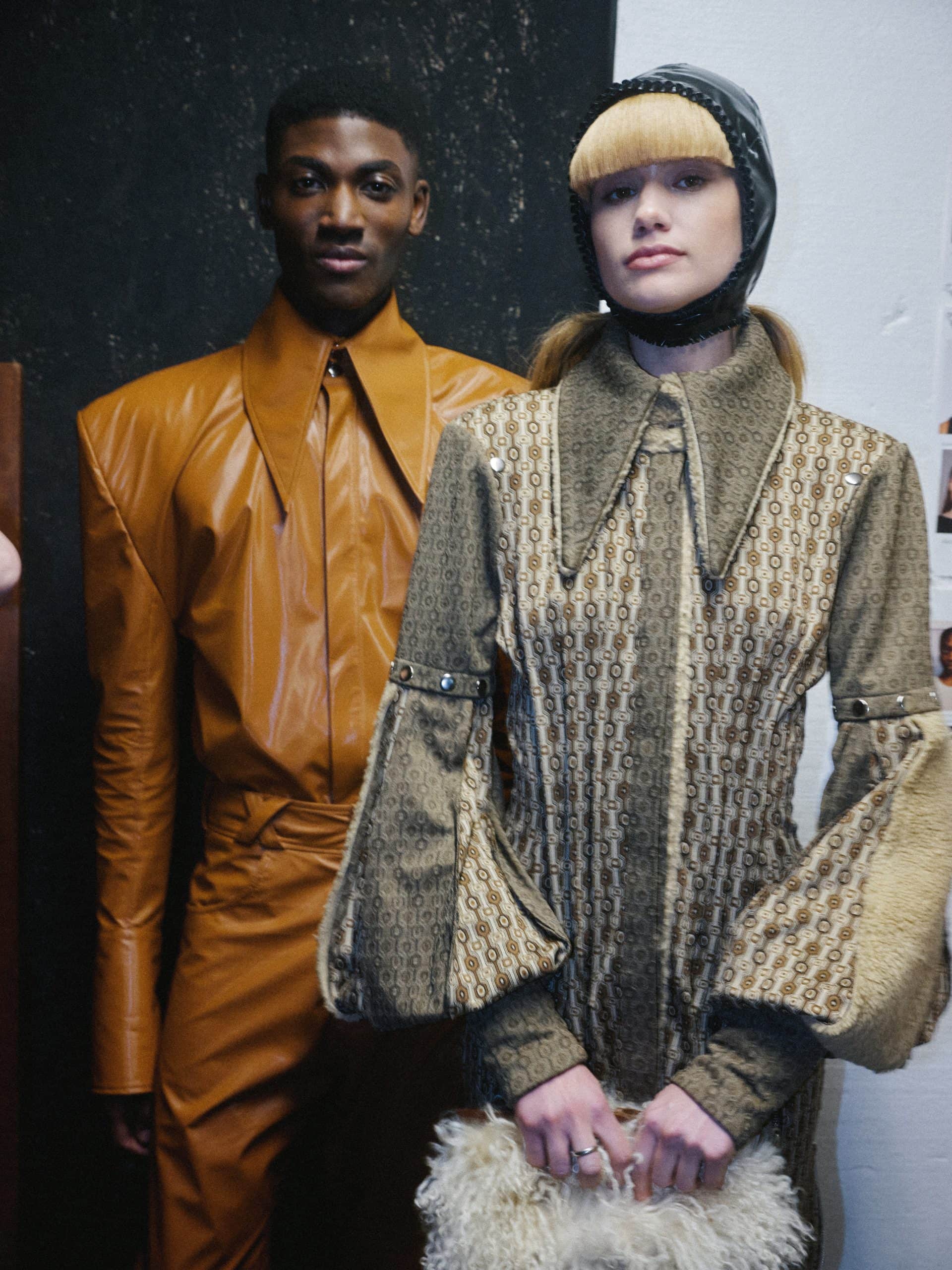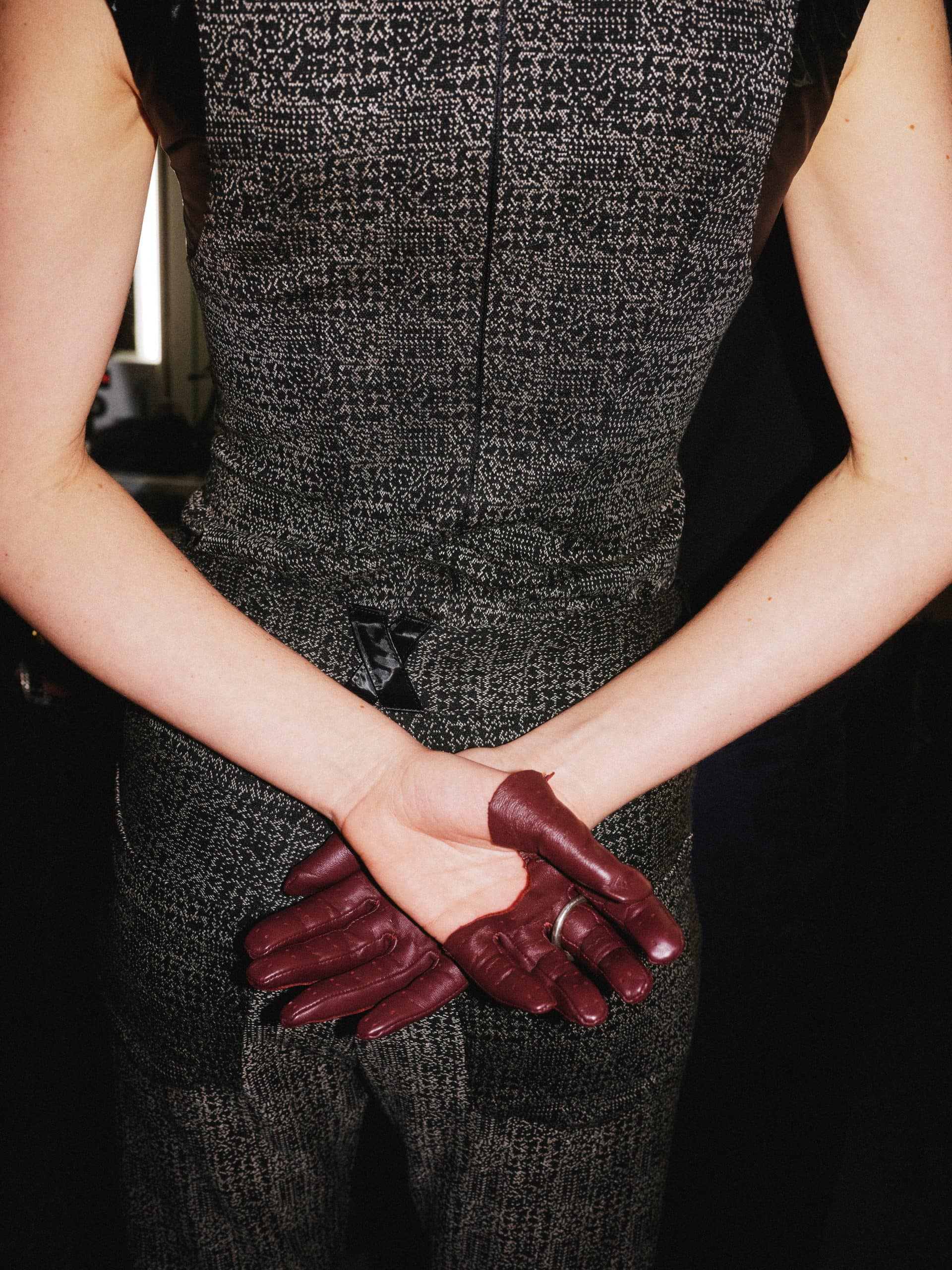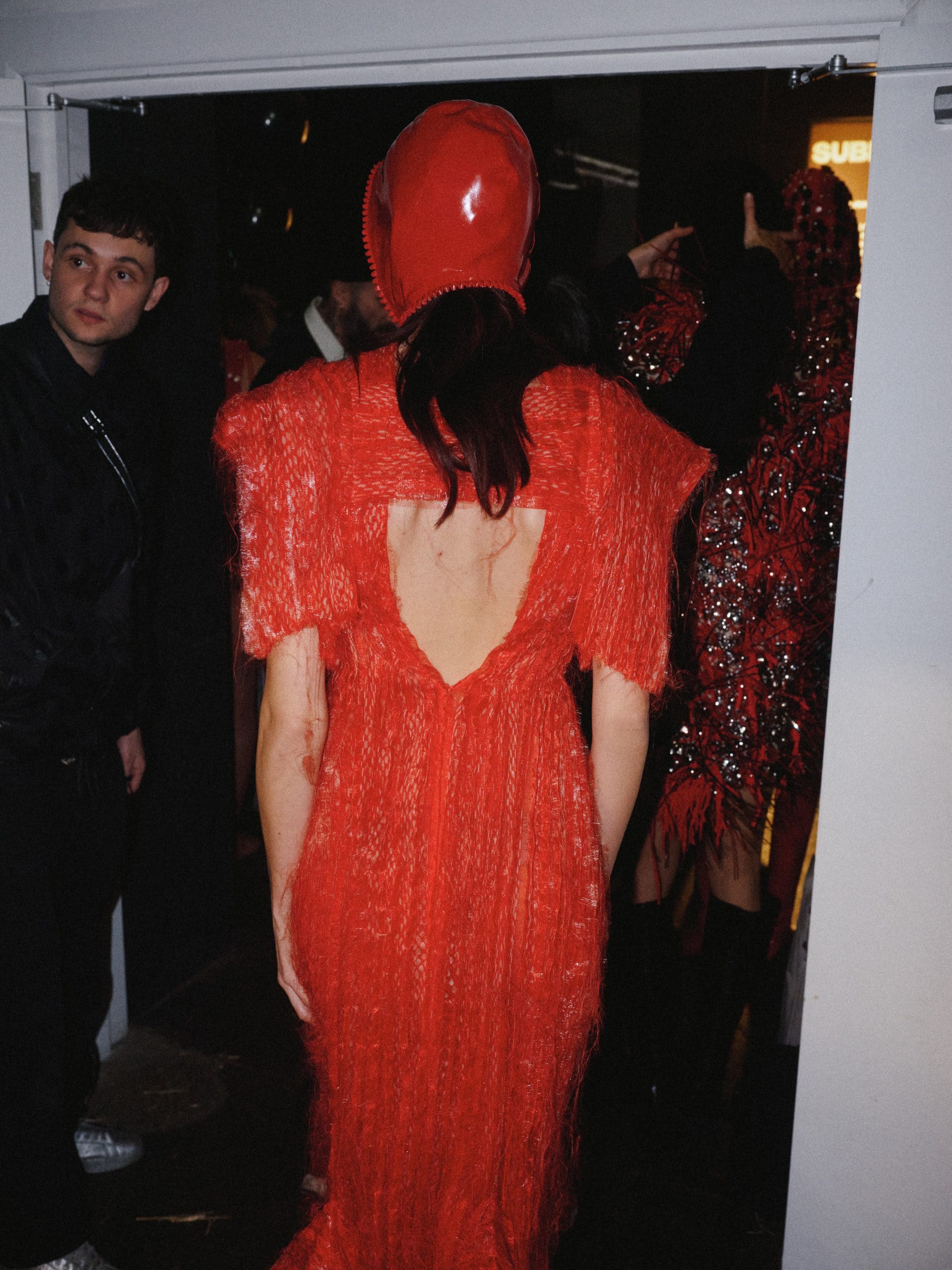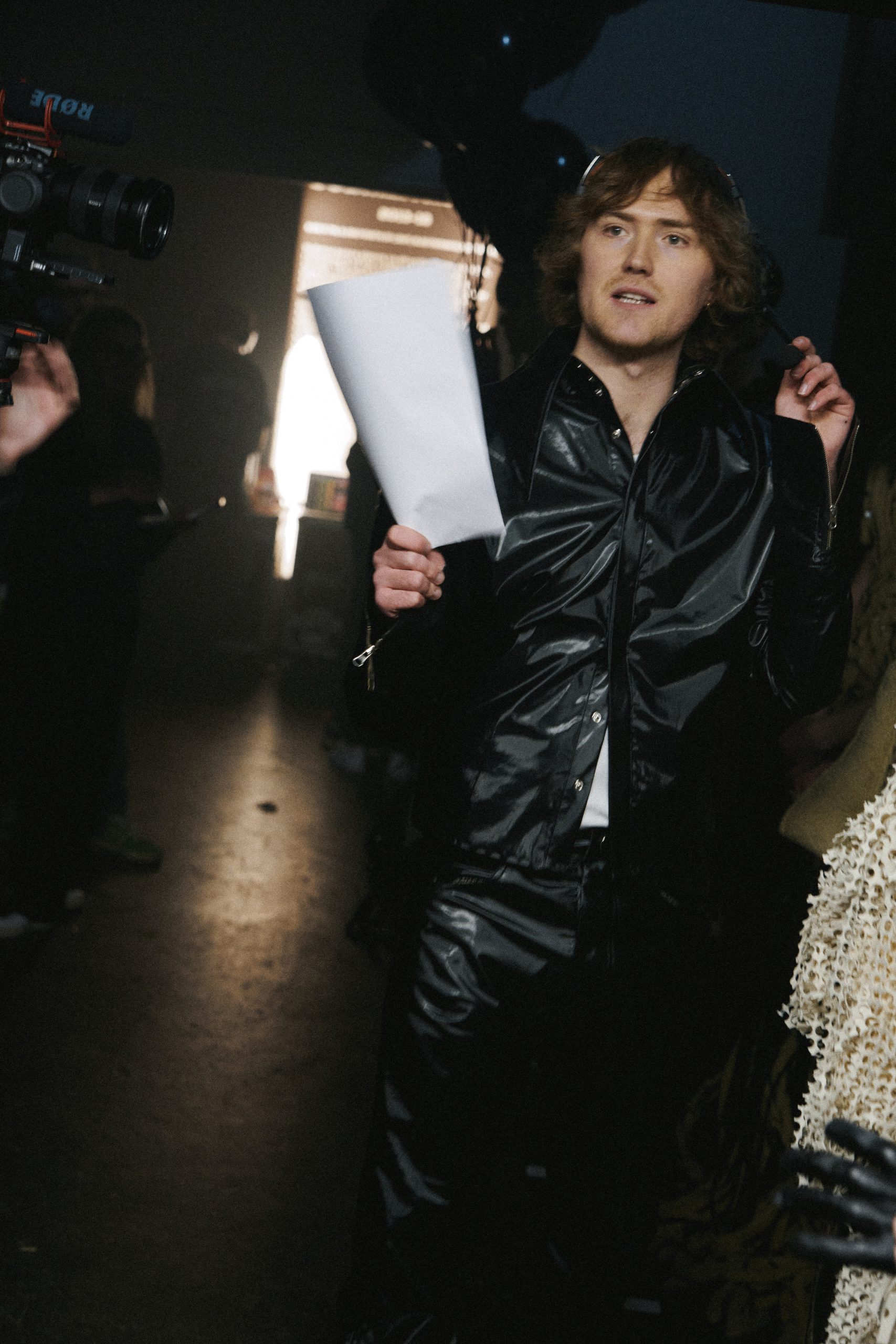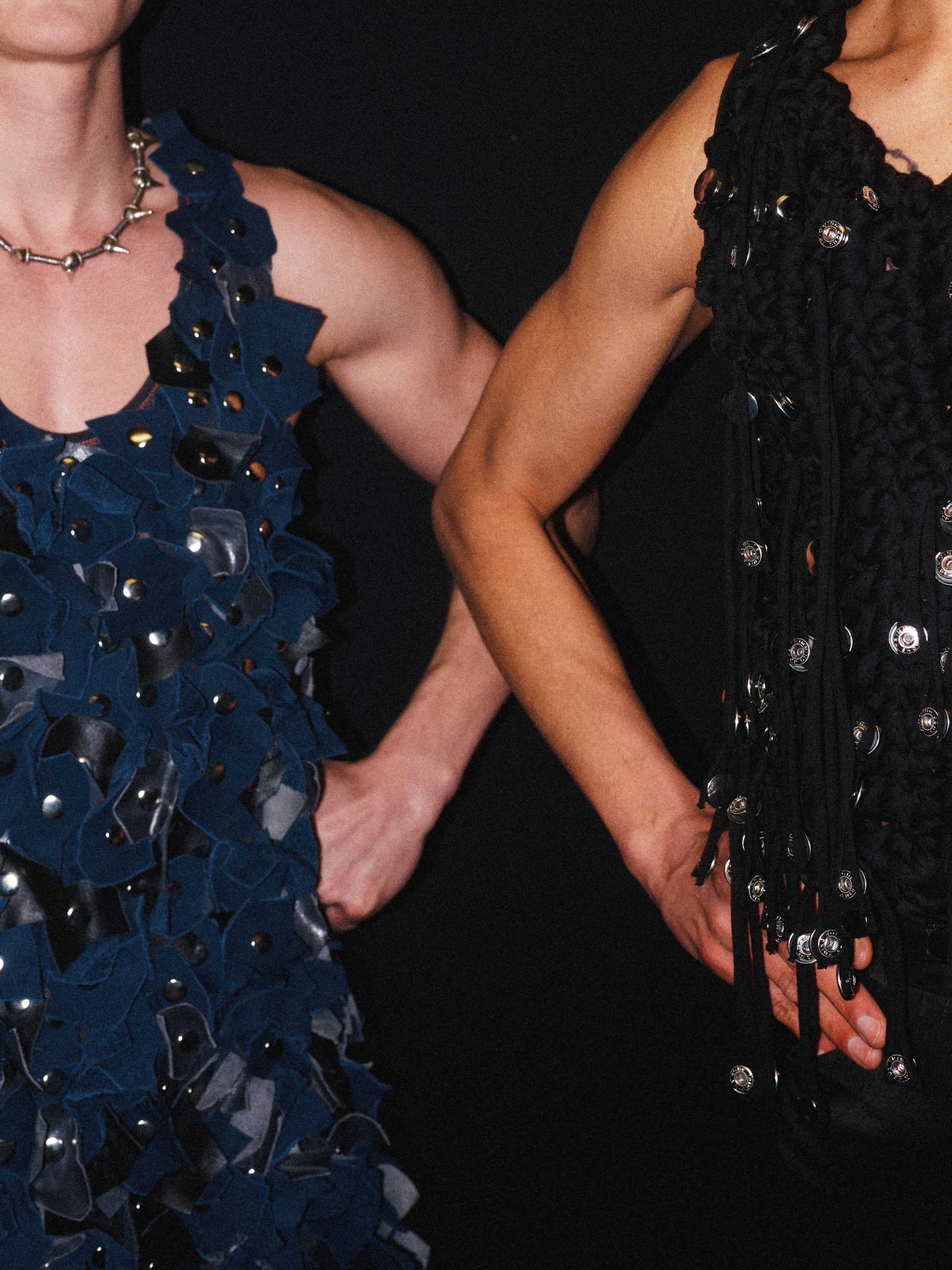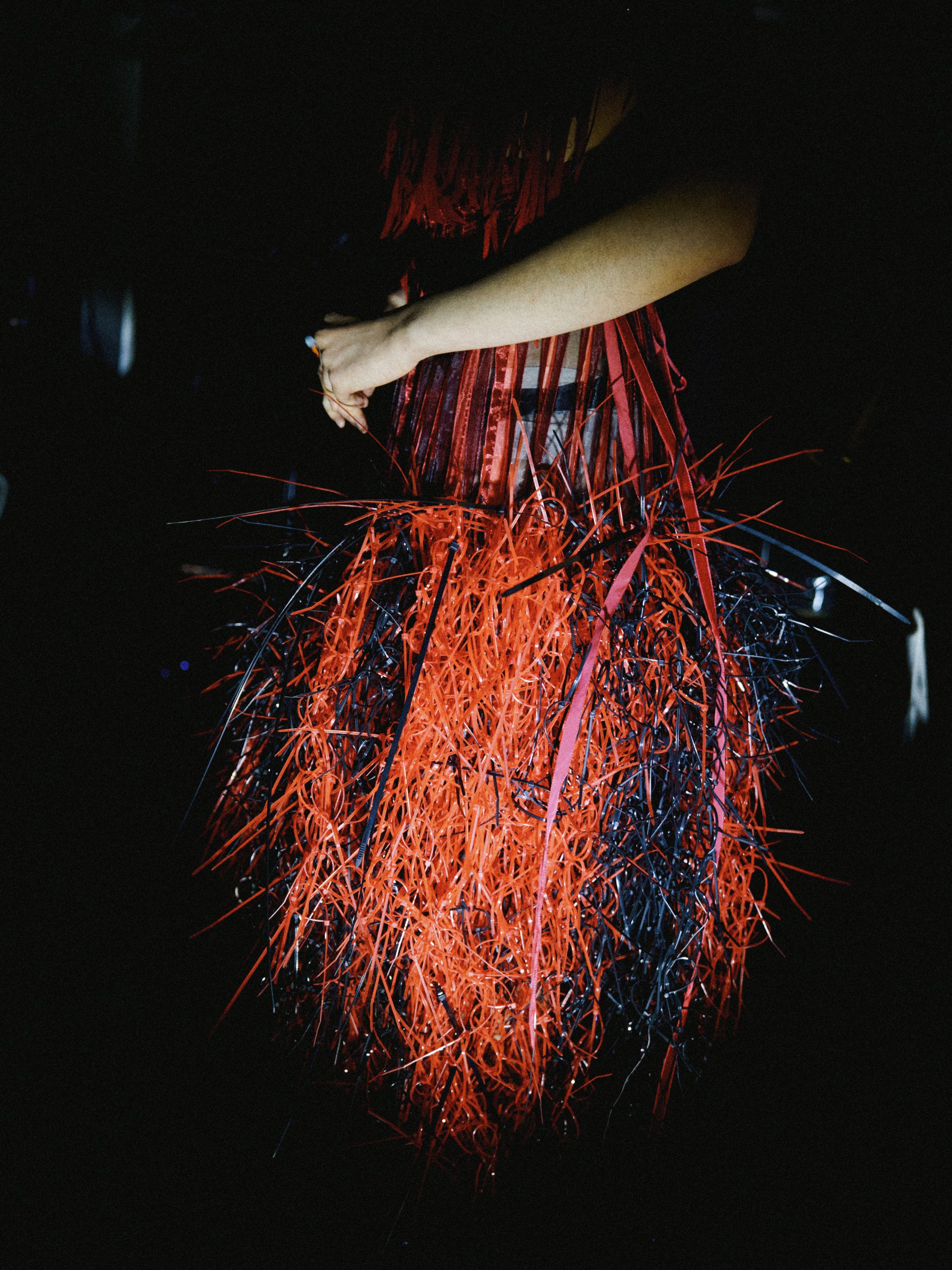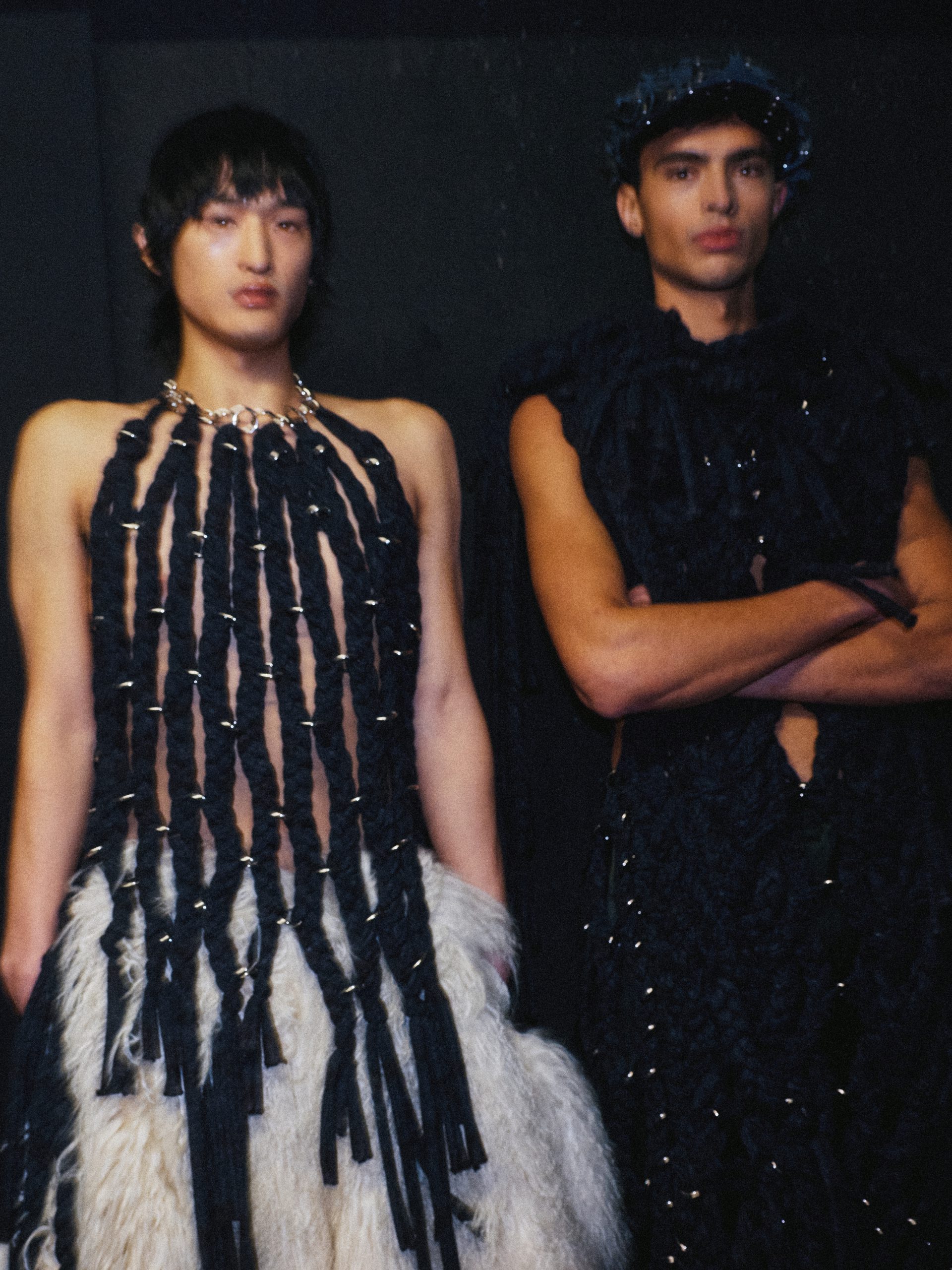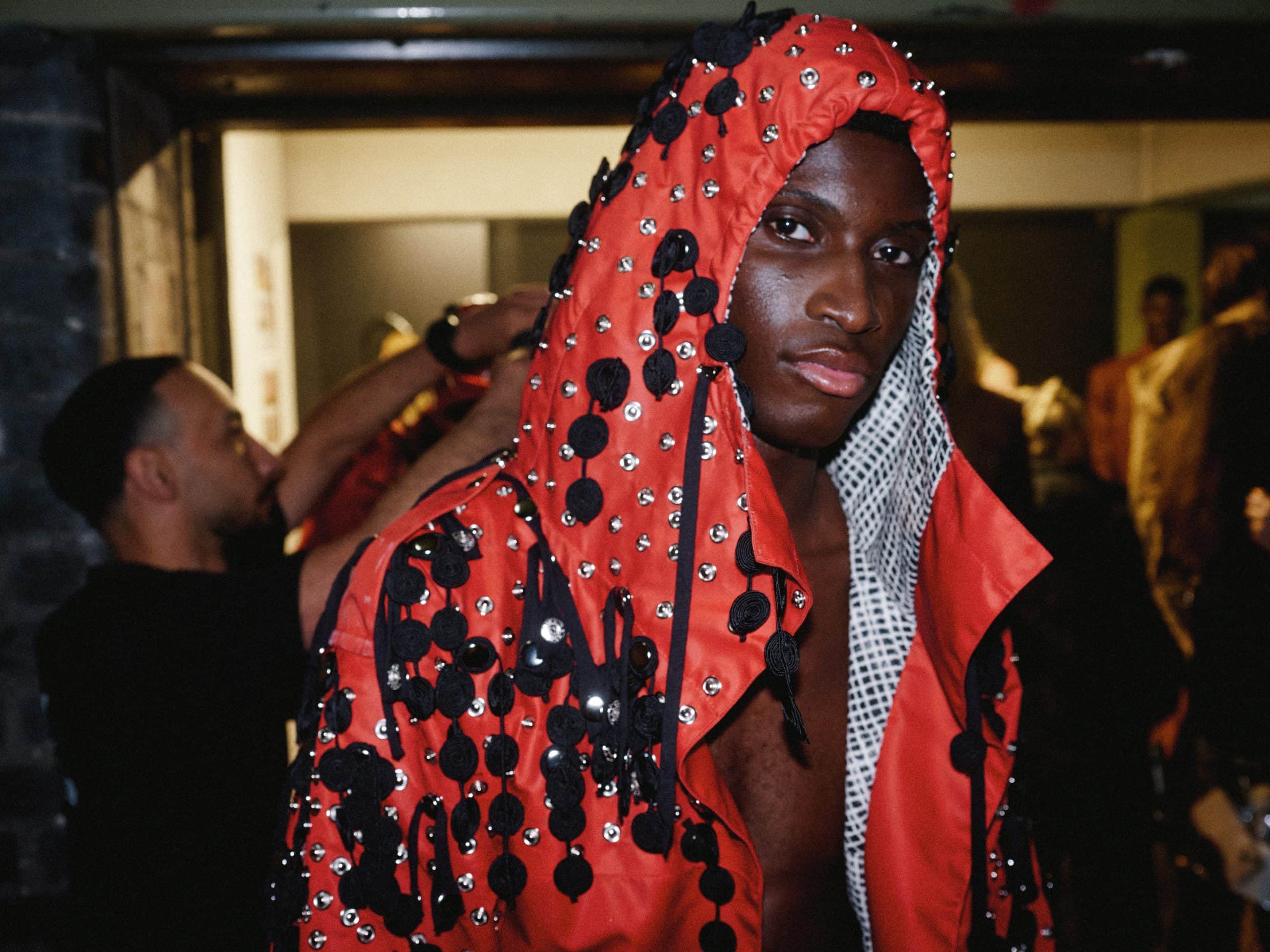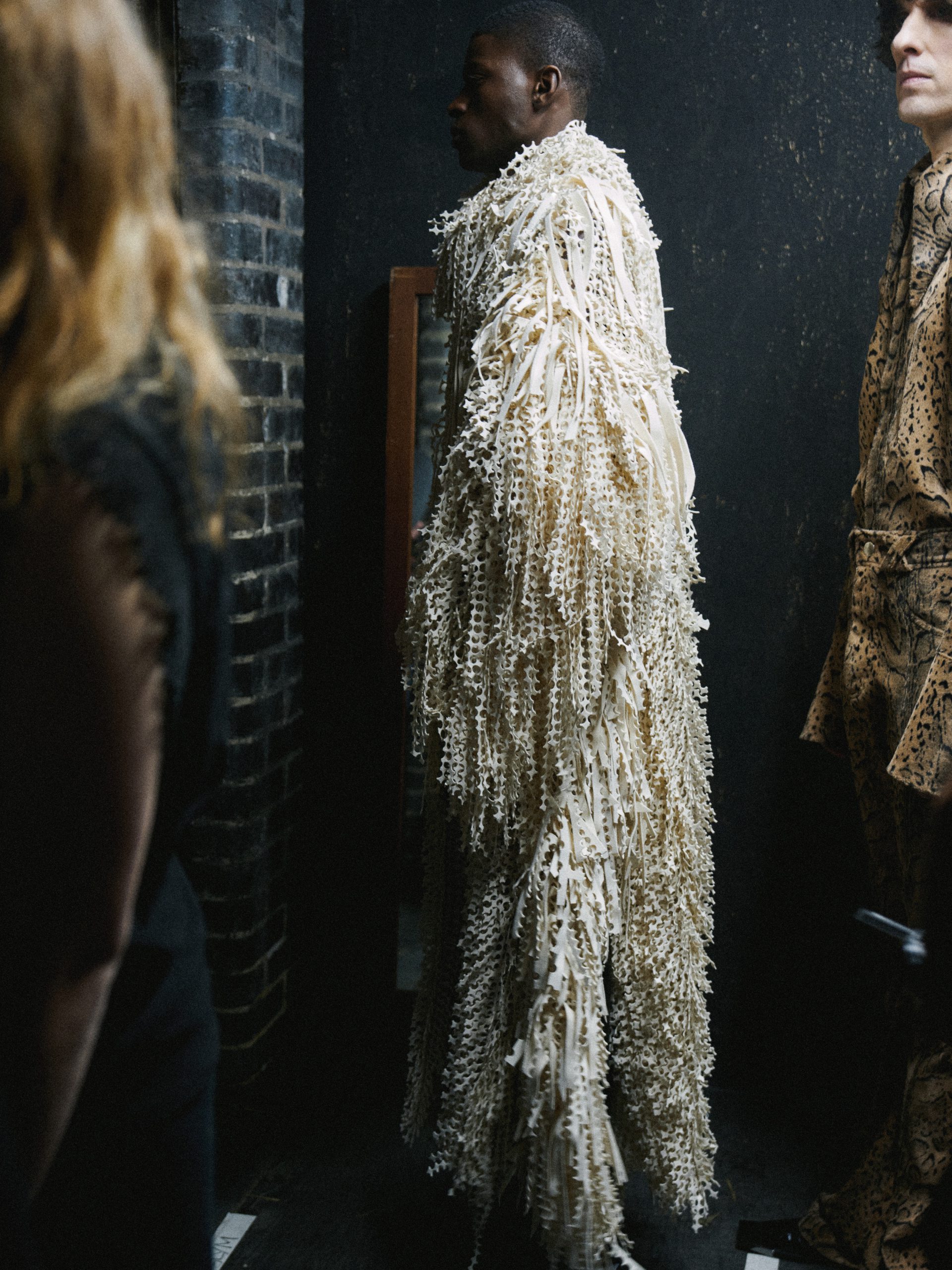For his solo debut at London Fashion Week, Derbyshire-born designer Maximilian Raynor imagined a world, set in the year 3025, where self-serving billionaires have taken over, driving relentless technological progression and moral regression. Given the close relationships between tech moguls and figures like Trump, it’s easy to speculate whether current events influenced Raynor’s dystopian vision.
Since his beginnings in 2022, Raynor has consistently intertwined socio-political critique with theatrical spectacle, and his MA Central Saint Martins graduate collection last year was no exception. This is shouldn’t come as a surprise, given his deep-rooted admiration for theatre, film and literature, having initially been drawn to acting and directing himself.
To his credit, his approach hasn’t gone unnoticed. In 2023 he won an LVMH scholarship and his designs have graced the pages of Perfect Magazine and Dazed, not to mention worn by the likes of Lady Gaga, Chappell Roan and Rita Ora.
Judging by the elaborate display at the entrance—a dress that took over 640 hours to construct from cabling and data centre materials—it is clear he intends to continue creating statement pieces of editorial appeal that resonate with boundary-pushing celebrities.
The show opened with a performance by three actors before the official first look set the tone: a sweeping plaid ensemble with voluminous sleeves, followed by a series of deconstructed chunky knits with unravelled edges that cascaded into long fringes of undone threads. Some pieces were interwoven with string and wire, while others were adorned with tiny bells that chimed with movement.
Perhaps his time at JW Anderson nurtured Raynor’s affinity for oversized knits, an influence that has since become recurrent in his work. The most striking example was a voluminous forest-green crocheted dress, where a plunging neckline and exaggerated stitches created a fluid, undulating movement.
Raynor’s silhouettes danced between British nostalgia and decayed grandeur, weaving echoes of Edwardian elegance into languid, timeworn forms. Raynor contrasts this with bold tailoring—broad-shouldered suits imbued with a ’70s edge, punctuated by oversized dagger-collar lapels.
Textures were in no short supply, with embellishments, metallic accents, pressed organza, and metal-studded leather patches adding depth to the collection. Raynor’s signature ribbon-and-tape textile made its expected appearance, reinforcing his distinctive approach.
While Raynor has a knack for volume and proportion, there’s room for slight refinement in his tailoring and fit, particularly when working with tricky materials like vinyl. Still, the styling grounded the collection, fitted bonnets and square-toed cowboy boots injecting a sharp, unconventional edge.
Mid-show, two dancers burst onto the runway, clad in black latex briefs and bell-adorned knits, adding another layer of theatricality to the presentation.
While his entertainment factor is undeniable, Raynor should be careful not to let the spectacle overshadow the clothes, which on their own did a formidable job of conveying his story. Ultimately, they need to resonate on the shop floor. This raises an important question: how would his vision translate into a more wearable, retail-friendly version?
It’s a promising debut, nonetheless. His raw, rustic aesthetic feels authentic, each piece imbued with a palpable sense of emotion. Still emerging from the student cocoon, he’s on a trajectory where refinement will follow in time.
As his show notes expressed, in a world consumed by hate and conflict, Raynor sees fashion as both an escape and a reflection of the times. He draws from the past not for nostalgia, but as a foundation to make it part of a bright future.
